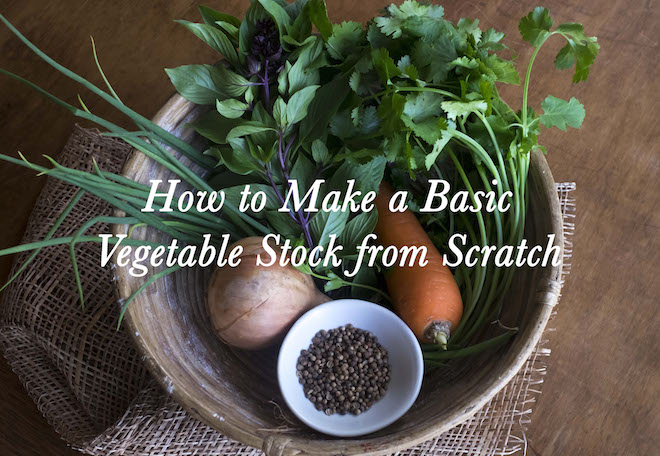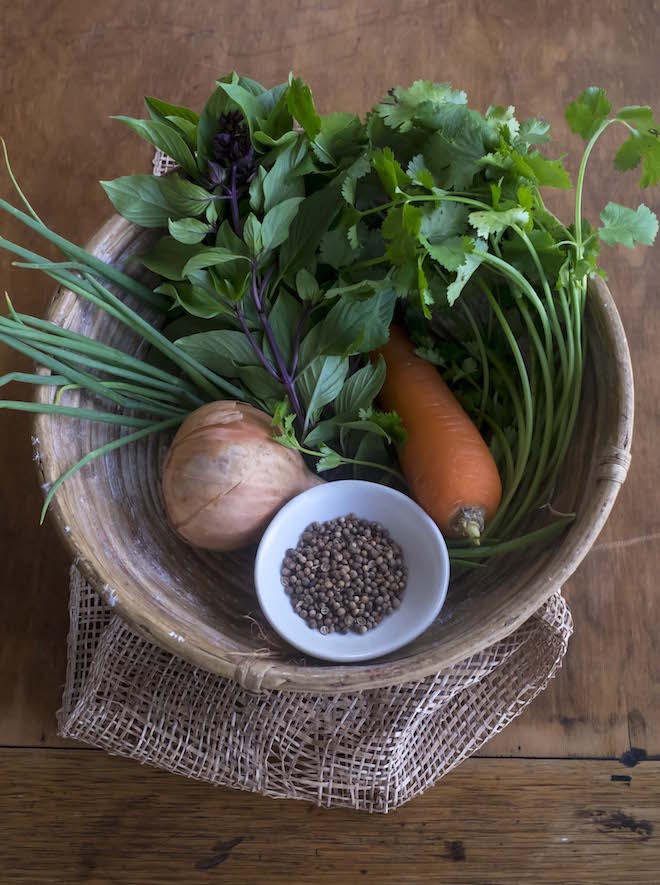
A Basic Recipe for Vegetable Stock
How to make a basic vegetable stock from scratch at home
Making vegetable stock is something I’ve had many requests and conversations about lately. I’ve decided to put together a very basic recipe that I use to make my stock at home. Most recipes instruct you to make large quantities of stock, but as our household is just the two of us, and oftentimes I am on my own, I make quite small batches of 2 litres or less at a time.
The first thing to do with vegetable stock, is to start building a little collection of vegetable offcuts. Think spring onion ends, carrot tops, left over pieces of ginger, coriander root, celery stalks, onions, leeks, etc. I keep a jar in the fridge to store them, and after a few days (no more than one week) I start to make my vegetable stock. Note, that you can also freeze your offcuts and de-frost them when you need to make a new batch of vegetable stock.
To make the stock, I lightly fry all the offcuts together with a little olive oil, along with some dried spices and tea (depending on the flavour I want to achieve), and then when everything smells fragrant I add water. The amount I use varies depending on the amount of veggies I have on hand. If I have less offcuts I use less water and a smaller saucepan, and if I have lots of offcuts I make a larger batch in a bigger saucepan or pot.
In terms of how to use vegetable stock, the options really are endless. Use it as a base for a broth or soup, use it when making polenta, couscous or rice instead of water, flavour roasted vegetables, add it to your pasta sauces – the list really goes on.
The below recipe is what I follow at home to make a basic vegetable stock. If I’m after more intense flavours, for example for more of a general Asian vegetable stock I’ll use Chinese celery, coriander root, cardamom, coriander seeds, and star anise. It all depends on what you’re cooking. For rice, couscous, polenta – I would keep the stock simple, the same goes for making pasta sauces from scratch at home.
In terms of what offcuts to exclude from your collection, avoid veggies that will break down and become ‘mushy’ detracting from the vegetable stock flavour. For example: zucchini, potato, beetroot, parsnip, pumpkin, etc.
Good luck making your vegetable stock at home, and let me know how you go!
JC xx

Vegetable Stock Recipe
Makes about 1.8 – 2 litres of stock
1 – 2 carrot tops
1 – 2 brown onion tops and ends (skin off)
4 – 6 spring onion bulbs (whites at end)
3 – 4 herb stalks (think coriander, parsley, rosemary or thyme)
1 sachet of Ginseng tea (I use this to bulk up the flavour of the vegetable stock)
10 – 12 shakes of cracked pepper or a small handful of whole peppercorns
1.8 – 2 litres of water
1 – 2 tbsp of quality olive oil
Optional
2 – 3 good pinches of quality salt
Add the olive oil to a medium or large sized saucepan or pot on medium heat
Once the olive oil has heated add all of the vegetable and herb offcuts and pepper together and fry until fragrant
Add the water and bring to the boil, then reduce the heat to low and simmer for 3 – 4 hours. During this period taste test the broth, and add the salt if you’d prefer it included
At the end of the simmer time, skim any froth that rises to the surface and set aside to cool
Have a storage container or bowl on hand and using a sieve, pour the broth carefully through the sieve into your container or bowl, and discard the solids. The finer the sieve, the better as you want to get rid of all the sediment at the bottom of the pan or pot
If using your vegetable stock right away, try to consume it within three to four days. If you’re saving it for a rainy day it can be frozen up to three months









